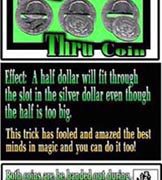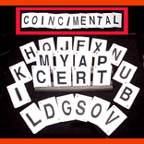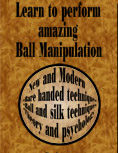The prospect asks: Can you come over my house and put a show on for two hour?
I did this one time because an agent talked me into it, never again. I’d rather do two shows in a day then to perform three versions of the sucker sliding die box painted different colors and four color changing hank tricks just to kill time.
Occasionally you will get this request. The only time a two hour show is possible, in my opinion, is if you are a Taro Card Reader, face painter, making extravagant balloons or performing strolling magic. Some might argue this isn’t really a “show” and they are right. A show consists of putting on a complete performance in front of an audience. So for you who do this sort of thing, here is how I like to explain my position:
Well, yes I can put on a show for two hours. As a matter of fact I could keep everyone sitting for half a day… if they were other magicians or lived in a European country. When I’m working for an audience of kids or adults in America, people expect variety. They want different activities and they want variety. When I’m performing the show I usually do for a group like yours I’ve found that it needs to start with some sleight of hand, then several segments of audience participation mixed with some mind boggling tricks in between and finally the big number to close with. If I’m there for more then an hour then what i do is no longer a novelty. Even the biggest names in show business only put on a 70 to 90 minute show. Think about your favorite concert and remember when the main singer left the stage and the band played a few songs by themselves? That’s because even in a big show people want to experience variety.
The show that I’ve been doing for several years has something that appears, something that disappears, something that changes color, something that changes places, something that floats in the air and the animals, birds and audience participation. Usually about 35 to 45 minutes is the appropriate time for a show with this much going on. But let me help you figure out some other activities your guests can do…. Then I name several games of activities before going back to exactly what I do.
I’ve heard the prospective client say, many times, they do not want to do any work. This is probably why they are looking upon you to fill their needs.
Another approach I’ve taken is to ask if there are going to be any relatives or parents or (if business) people in the same business attending. Then point out how the first part of the event should be a time where they all can talk to each other because that’s what they need to do.
Sometimes the prospective client will tell me they saw another performer who did perform for two hours. I usually respond “Was it some kind of a clown or storyteller?”. They explain what the other person did (which I can use to sell my good points) or in most cases they can not tell me what the other person did because they were out of the room… and again this is an important point… a good show should have people hanging on the next word out of the performers mouth. A long show is just a time filler. Other activities are needed. Add strolling magic or balloon animals and charge acordingly. Suggest strolling for an hour, ten minutes to set the show in place then the actual stand up performance. Even with this approach some clients just have their group sit. For some reason they think a party is right time to go comatose and I’ve seen plenty of it.
So.. they need to make a decision as to weather they just want someone to kill time or do they want a performance with a beginning, middle and an end.
Sometimes you will lose the show but if that’s all the customer wants is to kill time, they are talking to the wrong person. I value what I do. I am not a baby-sitter or window dressing for anyone…. unless they want to pay me the daily rate of fifteen hundred dollars, at which point, I’m yours all day.



